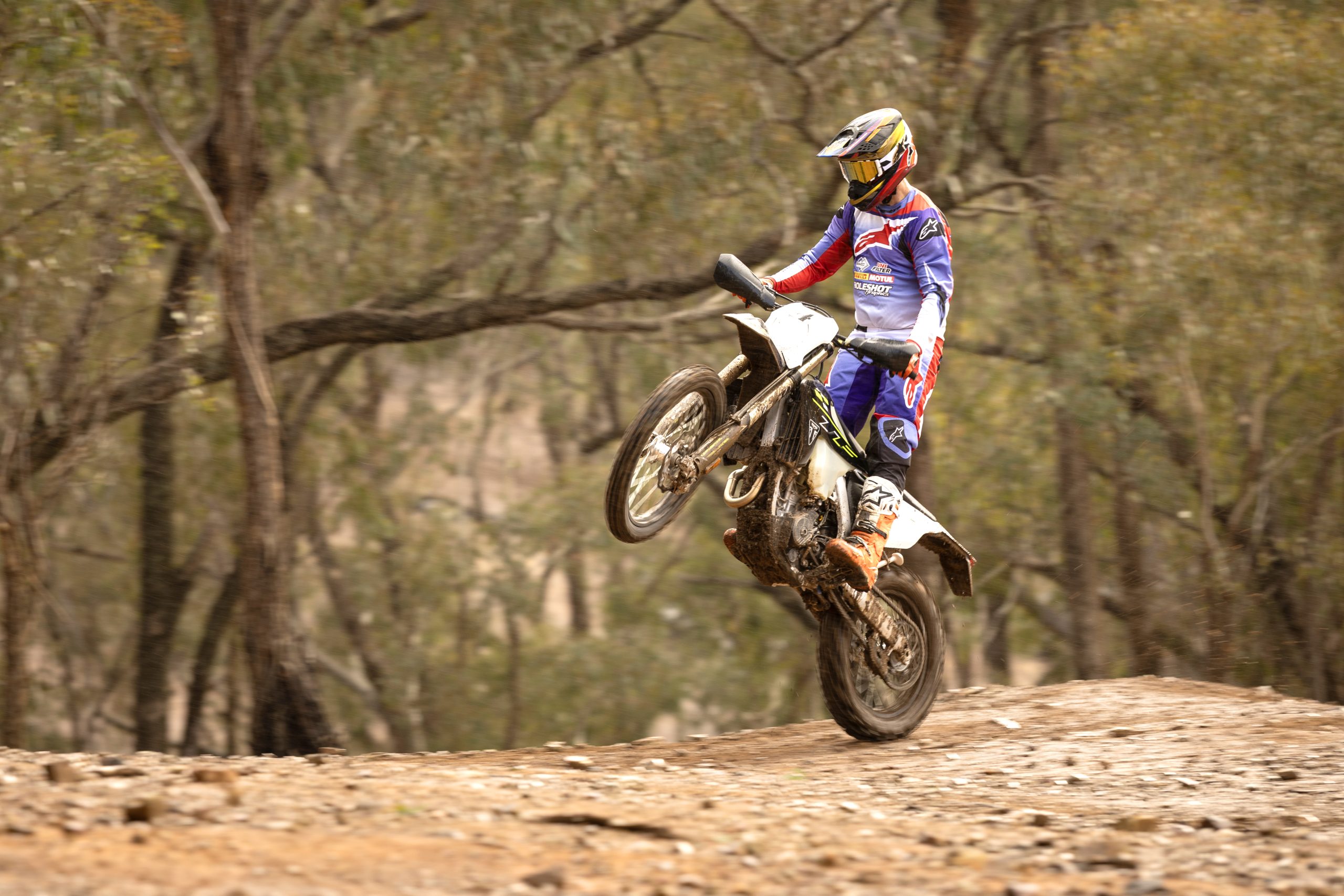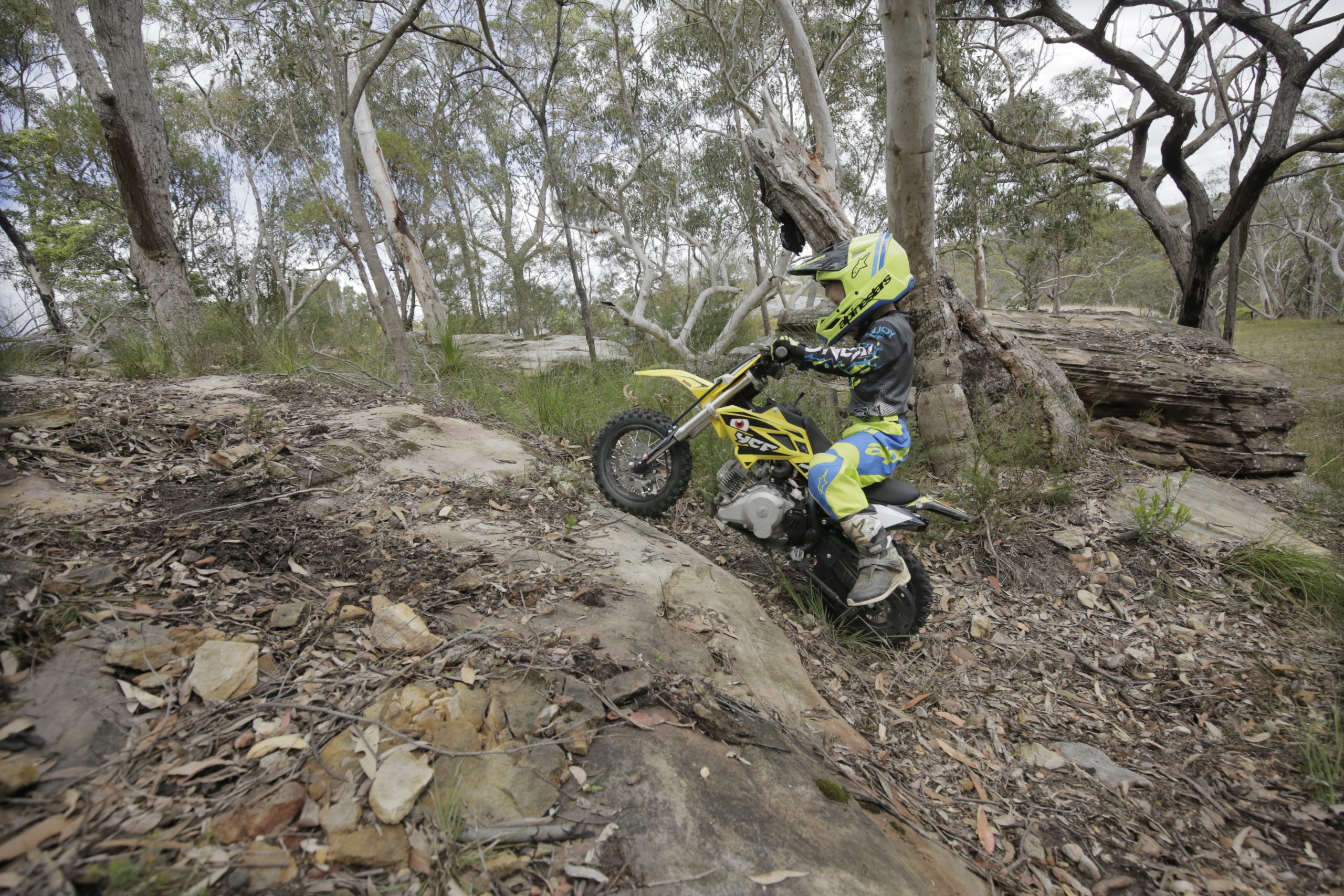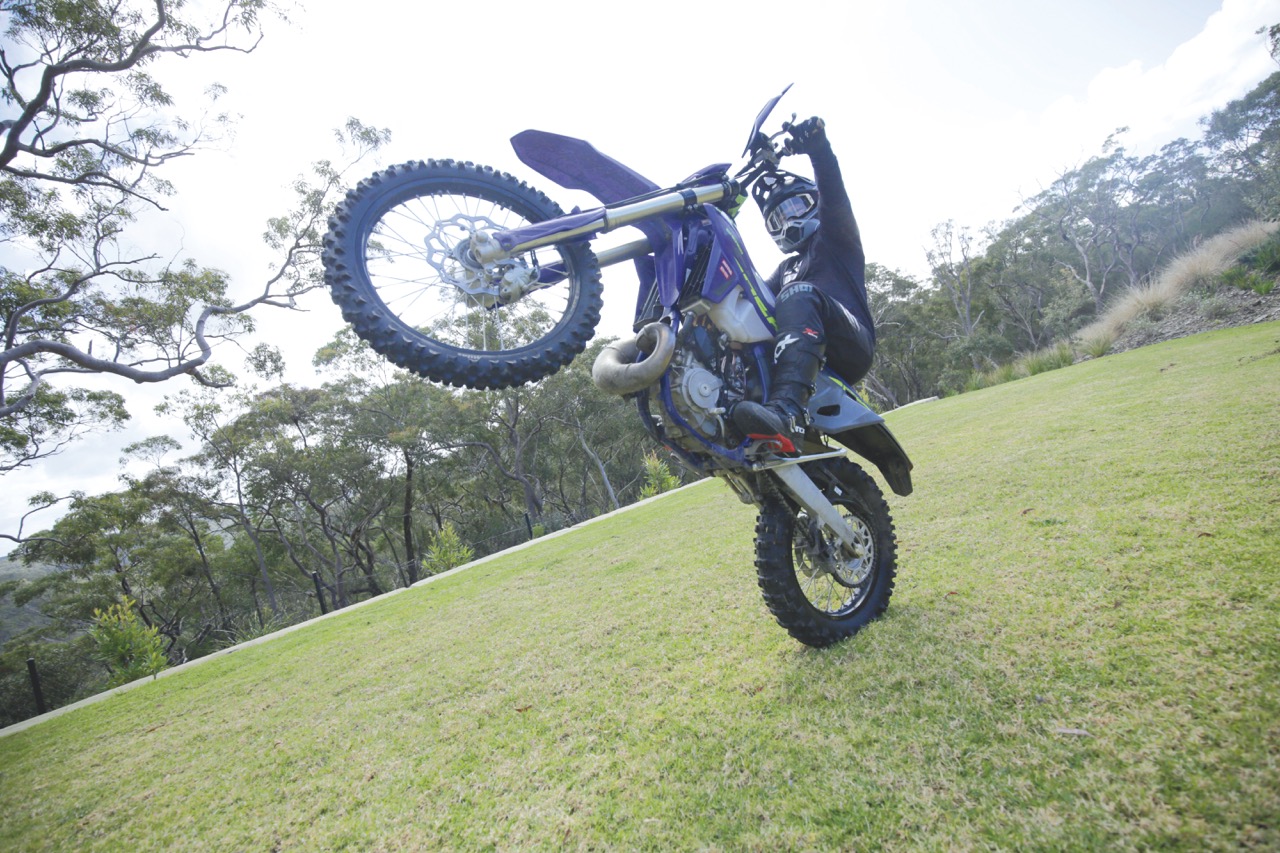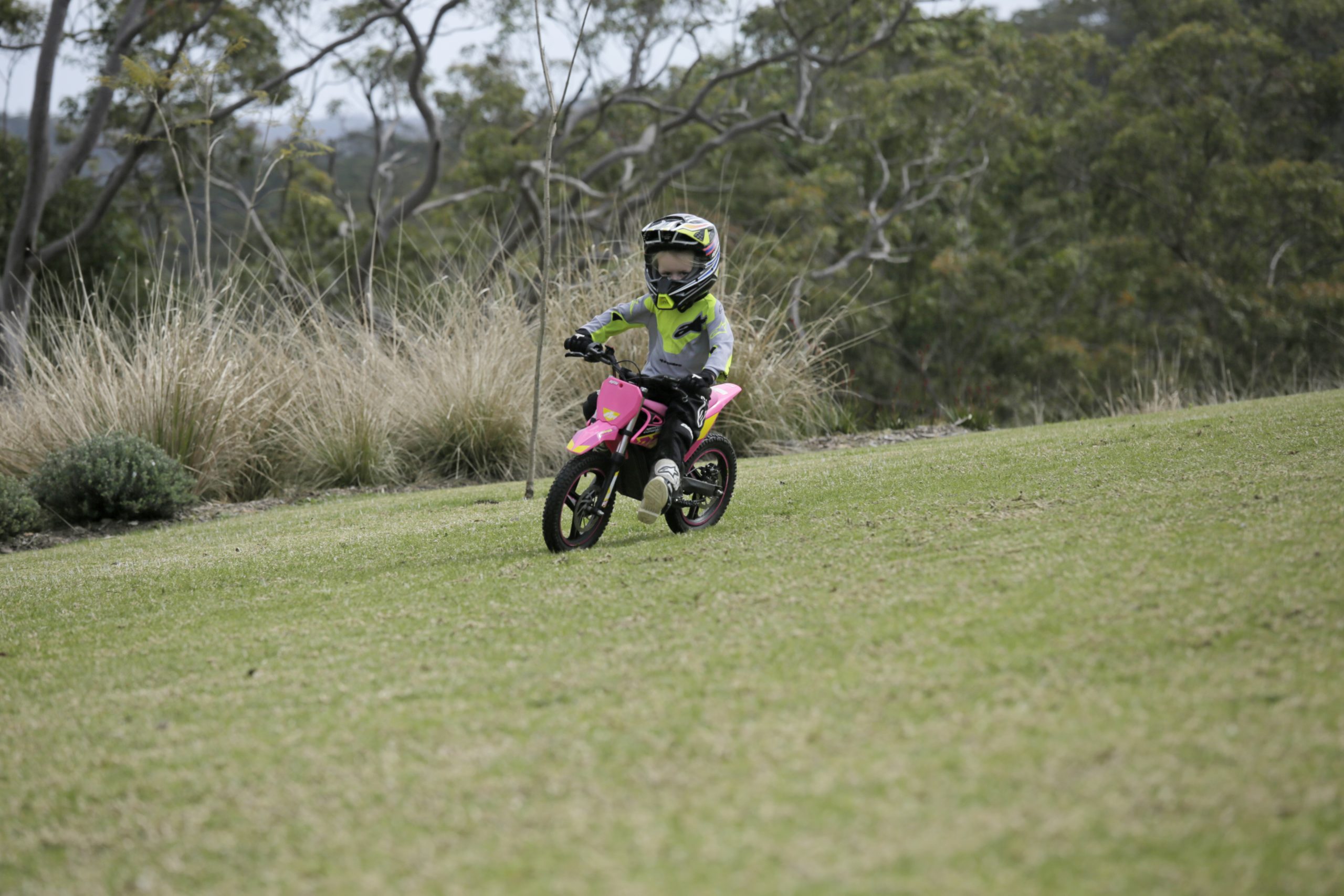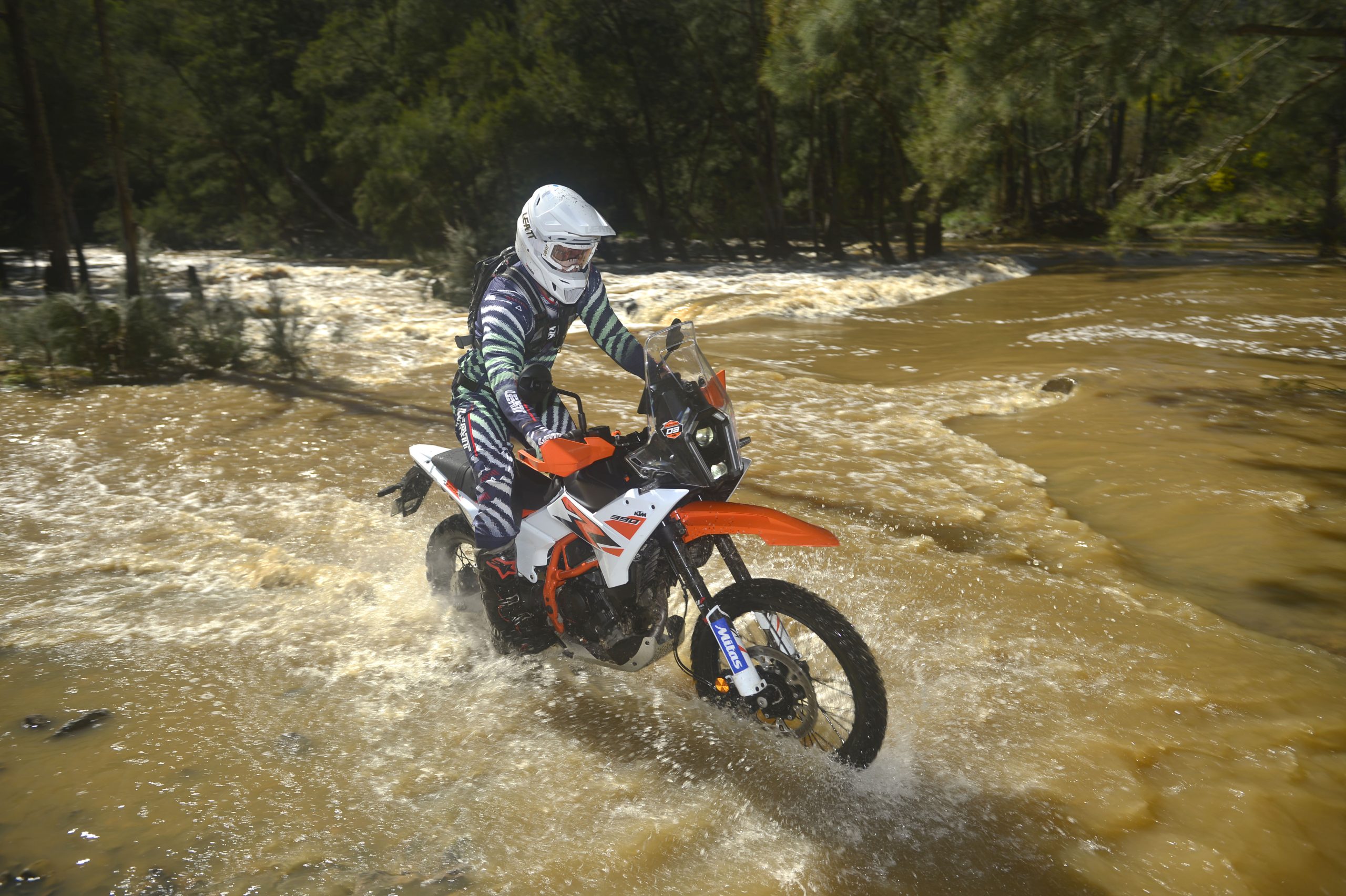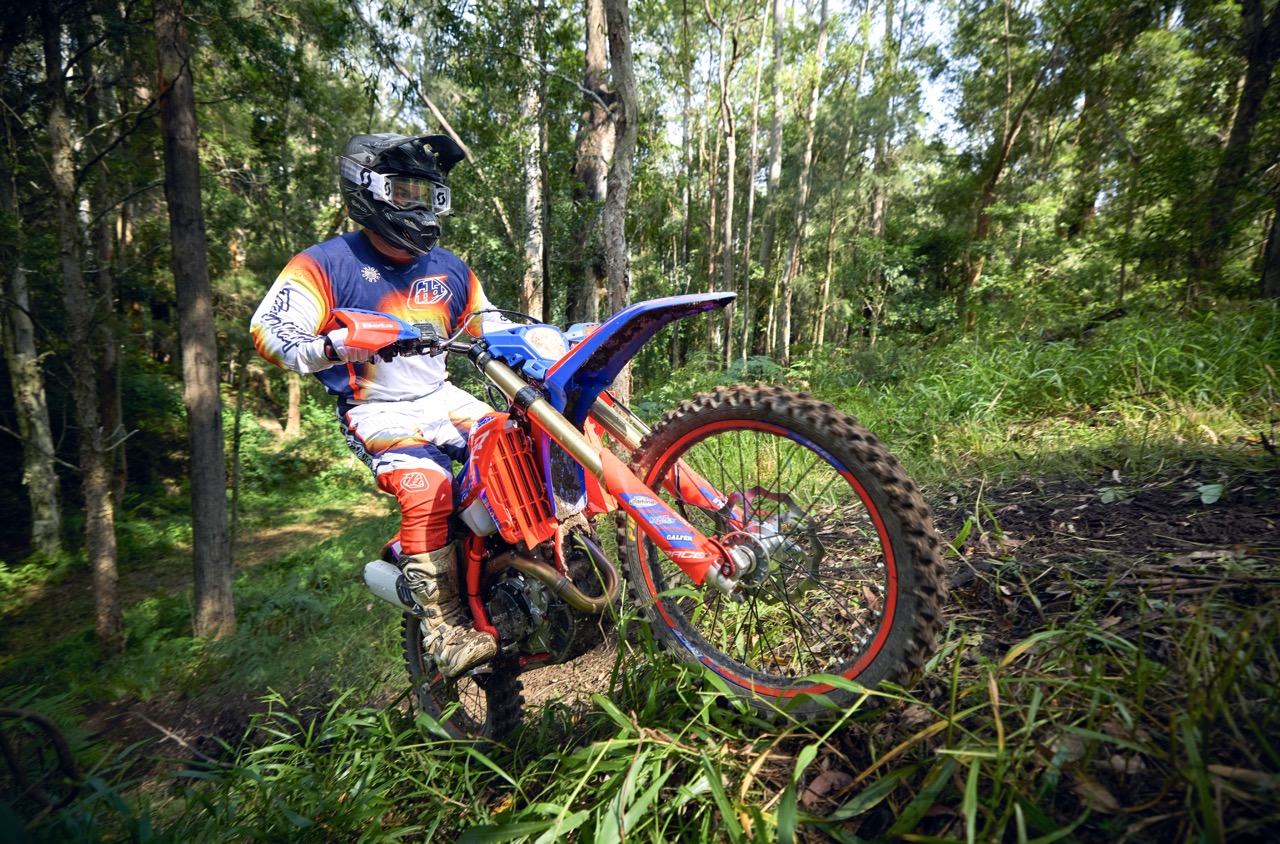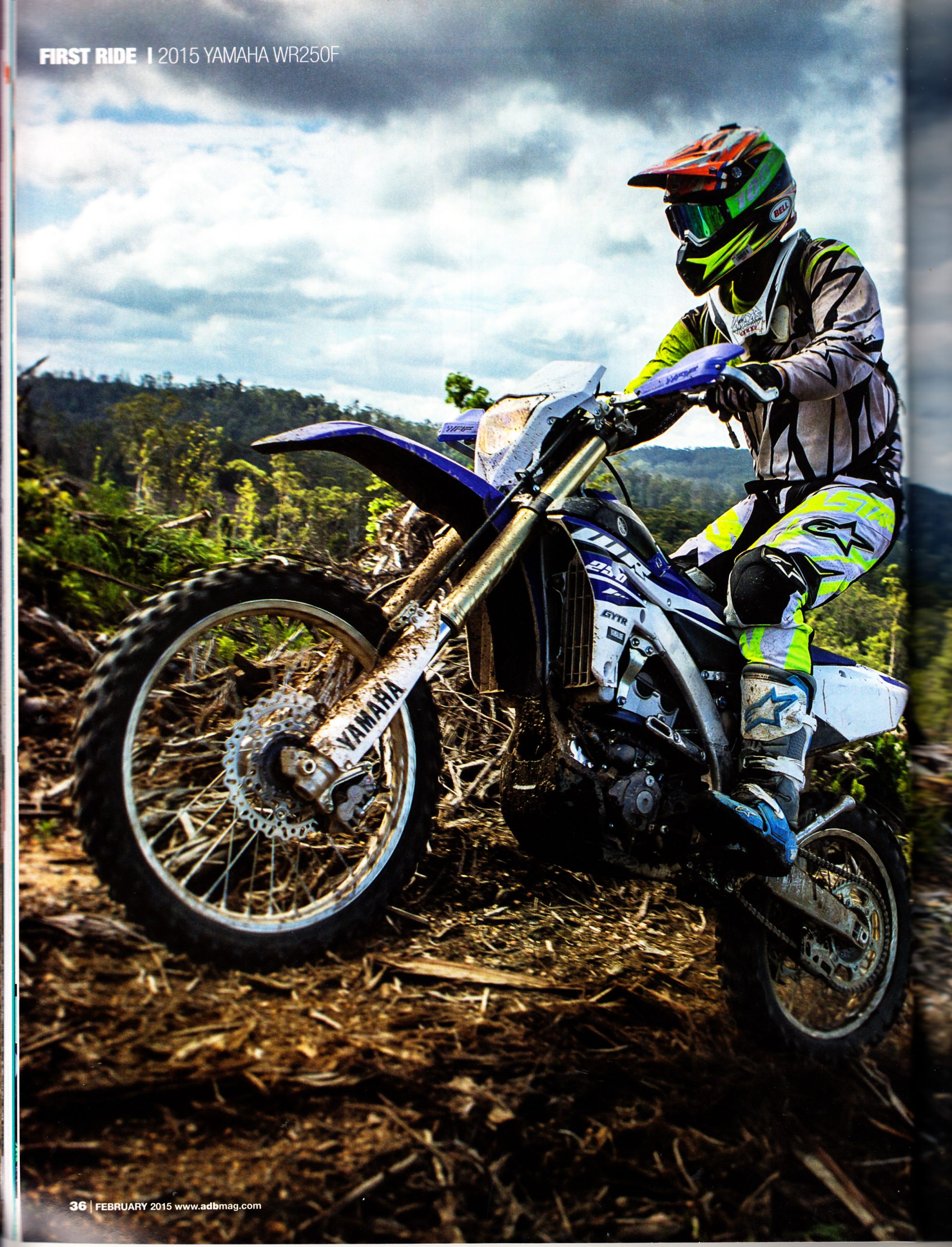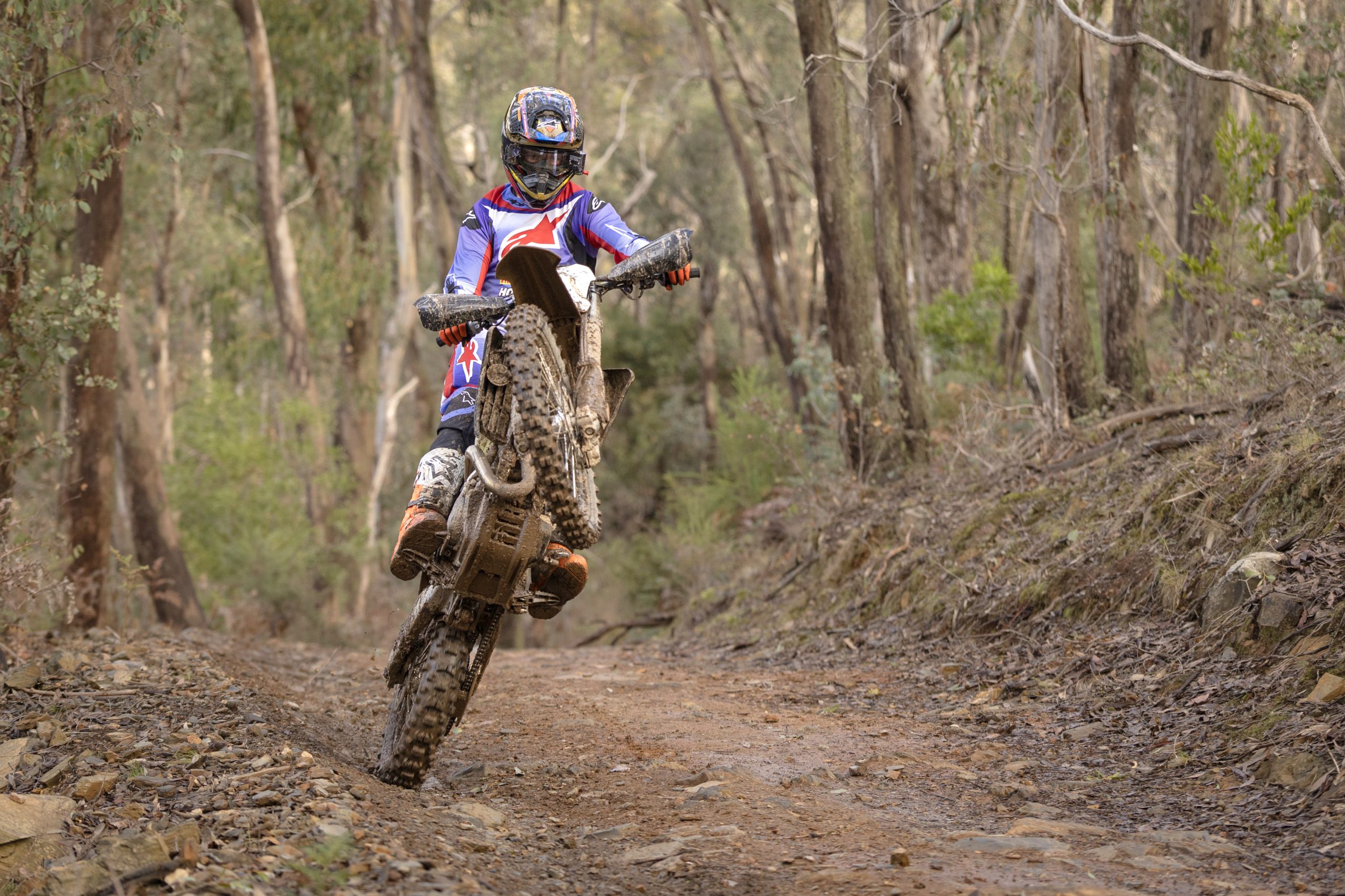There’s something about mid-300cc four-strokes that gets my juices flowing. For decades dirtbikes in the 300cc-400cc four-stroke range have been incredibly popular as both trailbikes and race bikes. Sadly, the variety of 300cc-400cc four-strokes on the market has slowly evaporated and we are now left with three 350cc machines from the Austrian group, a 300cc four-stroke from Sherco, a 300cc four-stroke from TM and a 350cc and 390cc four-stroke from Beta, our favourite the 2024 Beta RR 390. Sure, there’s a 310cc four-stroke from SWM but they’re no longer being distributed in Australia, according to our sources.
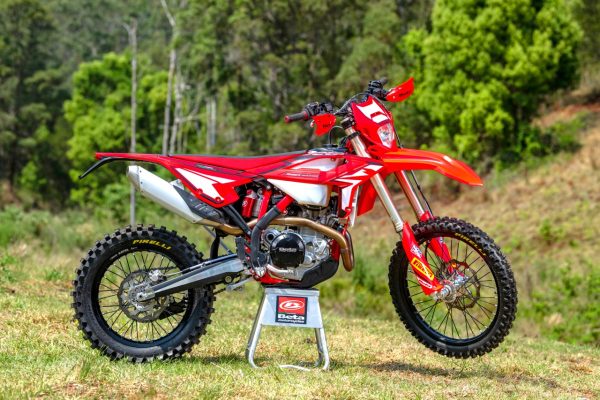
Of all those capacities, the only bike that is specifically designed as a trailbike is the 2024 Beta RR 390. Sure, the others are also fantastic trailbikes but they’re also a little more hard-edged than the RR 390. Even the GASGAS EC 350F, which the Pierer group market as their more trail-friendly brand, is still more racey than the RR 390. So the RR 390 stands alone as the only mid-capacity trailbike on the market.
But, there is one beast I have not mentioned and that is the Suzuki DR-Z400. It just slips into this capacity but to compare it with any of the above bikes isn’t fair to any of them or the Doctor. Sure, the DR-Z400 is incredibly reliable and for what it is, incredibly capable but it has inferior power, suspension and handling to the 2024 Beta RR 390. It’s no longer in the same conversation.
As the only dedicated trailbike on the market, the Beta RR 390 should be the most popular machine in Australia, seeing as how most people are just trailriders. If that’s you and you’d rather spend the weekend exploring the bush and winding along endless trails in the bush rather than going in circles on a five-minute test loop racing the clock then check out how good this 2024 Beta RR 390 is.
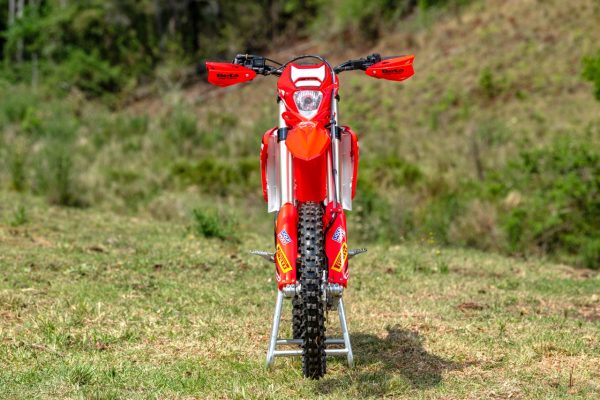
WHAT MAKES IT SO GOOD?
The Rignano sull’Arno-based manufacturer, Beta, has introduced the MY24 RR range that carries over the strengths of the previous models while incorporating significant new features and targeted upgrades to various engine sizes. Beta has worked closely with Enduro champions Brad Freeman and Steve Holcombe to fine-tune the powertrain and frame/suspension of the MY24 RR four-stroke models. Their main focus for these modifications was to make the RR four-strokes even more user-friendly, perfect for us trailriders! Instead of implementing major changes, the MY24 models feature a series of upgrades.
The new seat design is one of the key updates. The seat now features foam with a revised geometry and density. The redesigned foam offers a larger support area and is composed of materials that are softer than previous generations. If you found the old seat as hard as a piece of four-by-two then you will be glad to know the new one is a little softer. It’s not DR-Z400 soft but it’s certainly in line with its competitors when it comes to seat comfort.

The suspension system has also seen refinements. The MY24 models feature lighter upper fork tubes, particularly in the area where the lower fork sliders engage. This new machining process provides controlled flexibility, resulting in smoother damping of rough terrain Beta claim.
The radiators have been upgraded to be both lighter and more durable. The new radiators feature shaped reservoirs in the upper section, which allow the bike to achieve a greater steering angle. These radiators also offer improved coolant circulation, enhancing vehicle cooling. With an increased number of reinforcements and a new non-plastic cap that is tougher and less prone to damage, these radiators contribute to the overall durability and performance of the 2024 Beta RR 390.
Improvements to the braking system include an upgraded front brake line. The protective sheath of the brake line now features dual crimping at both the top and bottom, compared to the previous single crimping at the bottom only. This ensures better protection against the continuous stresses that the brake line is subjected to, in an effort to improve the reliability of the braking system.

Beta also claims the traction control system has been further refined by their technicians. Through improved mapping, Beta claim the system now operates with greater precision, minimizing unwanted or overly invasive intervention. This results in a smoother and more controlled riding experience, particularly in challenging conditions.
Finally, the airbox sleeve has undergone a significant overhaul in terms of geometry. This redesign improves airflow to the engine, enhancing performance at medium to high engine speeds while maintaining the low-speed torque achieved with the current exhaust manifold.
With these enhancements, the MY24 RR 390 is well-positioned to continue as the king of the trails. We took the 2024 Beta RR 390 for one hell of a trailride to see if it has lost its trail edge.
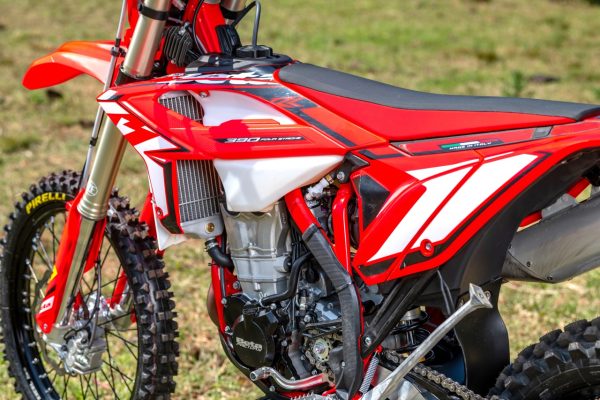
THE PERFECT BLEND
The 2024 Beta RR 390 has emerged as the standout trailbike in the Beta range. It blends useable power, plush suspension, and two very handy riding modes.
At the heart of the MY24 Beta RR 390 is a powerful engine that delivers impressive torque and horsepower. The 390cc engine offers a strong and torquey output that is perfect for navigating tough trails, climbing steep inclines, and powering through challenging terrain. It feels like it has the torque of the RR430 or even the RR480 but without the top-end and of course inertia.
As soon as I opened it up I immediately noticed the smooth power delivery. Beta use a stepper motor system to prevent any bogging and it works a treat to smooth out the power. The RR 390’s engine has been finely tuned different to the rest to provide ample low-end torque, making it easy to manage in technical sections. It still gets up and hums but riders will be rewarded more for lugging the bike in taller gears.
The MY24 Beta RR 390 suspension is one of the most trail-specific setups I’ve ever ridden on. It’s more forgiving than any of the Racing models and while not as soft as the DR-Z400s’ fork and shock, it’s much more forgiving than touted trailbikes like the Yamaha WR450F, KTM 350 EXC-F and Sherco 300 SEF Factory. They do dive a little in the front-end when under heavy braking downhill which can make it hard to get the front-end to stick in a rut in a corner at the bottom of a hill without knifing.
You can fine-tune the suspension to feel a little firmer thanks to the preload and rebound located at the top of the fork leg but it won’t really help when the fork is pushed to its limit. You can of course go up a spring rate but we’d suggest looking at the Racing model if you plan on going fast and charging into everything you see. The comfort of the suspension is particularly noticeable on long rides, where fatigue can set in quickly.
Another highlight of the 2024 Beta RR 390 is its dual-map ignition system, which offers both rain and sun modes. This has been on Betas for several years now and on the RR 390 it’s still good but not as needed. The RR 390 engine is easy to control but still incredibly powerful so you don’t really need numerous maps. The rain map is designed to tame the bike’s power delivery, making it more manageable on slippery and wet surfaces. This mode reduced the risk of wheel spin which allowed us to have a little more control in the bulldust but I think it would be more beneficial on hard red clay but we didn’t have any.
On the other hand, the sun map unleashes the full potential of the RR 390, providing a more aggressive power curve that is ideal for dry and grippy trails. This mode allows the bike to perform at its peak but seeing as how this bike is better when lugged and ridden by trailriders who want to cruise all day, it’s not a huge benefit. The ability to switch between these modes on the fly is handy and the traction control adds another layer of control that improved rear wheel drive even more but like I said, this motor is so good for trailriding, you don’t really need any rider aids.
Beta has also paid great attention to the ergonomics and overall design of the RR 390. The RR 390 is easy to handle and doesn’t feel overly heavy between the legs. It feels comfortable in any terrain from technical to open stuff.
Seeing as how it is a 390cc engine, it doesn’t have an advantage like the 350 and 450cc machines do with their agility and power, respectively, which is why it isn’t the best race bike in the E2 class but as a trail bike is exceptional.
The seat is now much more comfortable for sitting for extended periods of time and the rider triangle is pretty spacious with a bit of a sit-in feel instead of sit-on feel to the bike. The RR 390 also looks the part and we love the all red look!
The MY24 Beta RR 390 is a remarkable trailbike with useable power, compliant suspension and a much more comfortable seat for long days in the saddle. Its strong and torquey engine, plush suspension, and adaptable rain and sun maps make it a top choice for trailriders of all skill levels. Beta hs also worked hard to make their machines more reliable than ever (I have some riding buddies with 500 hours on their Beta two-strokes and one single top-end kit replaced) and their dealer support and online parts supply is much better than it was a decade ago. At $13,995 plus ORC, it’s priced right for trailriders too!

2024 Beta RR 390
TYPESingle cylinder, four-stroke
DISCPLACEMENT 385.6 cc
BORE & STROKE 88mm x 63.4mm
COMPRESSION RATIO 12.48:1
STARTER Electric starter
COOLING Liquid
FUEL SYSTEM Elldor dual electronic injection
CLUTCH Wet multi-disc clutch
TRANSMISSION Six-speed
FRAME Molybdenum steel with double cradle split above the exhaust post
WHEEL BASE 1490mm
SEAT HEIGHT 940mm
GROUND CLEARANCE 320mm
WEIGHT (DRY) 107.5 kg (Front 52.7 kg / Rear 54.8 kg)
FUEL TANK 9-litre, 2.3-litre reserve
FRONT SUSPENSION ZF Hydraulic USD Fork with ø 48mm shaft, 295mm travel
REAR SUSPENSION ZF Monoshock with progressive compound lever, 290mm travel
FRONT BRAKE Nissin wave disc 260mm
REAR BRAKE Nissin Wave disc 240mm
FRONT TYRE Maxxis 90/90 – 21
REAR TYRE Maxxis 140/80 -18
RRP $13,995 plus dealer delivery and ORC
BROWSER Betamotor.com.au
Words | Mitch Lees
